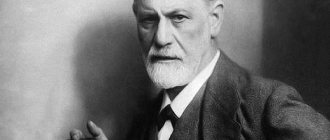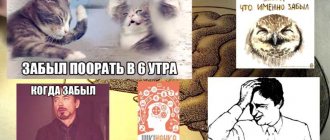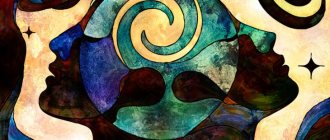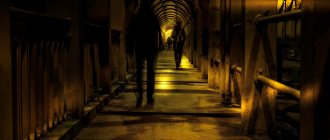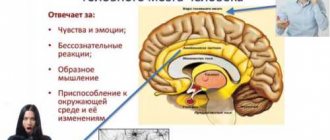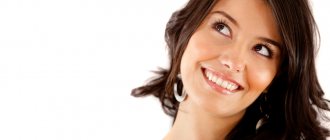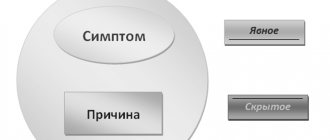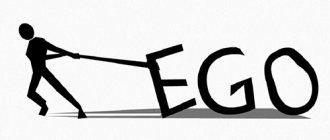Anna Freud, whose photo and biography are presented in this article, is the youngest daughter of Sigmund Freud and his wife Martha. She was born in 1895, December 3. At that time, the family’s financial situation was difficult, and everyday difficulties were aggravated by the birth of their sixth child. Martha Freud independently ran the household and also took care of the children. In order to help her, Minna, her sister, came to live with the Freuds. She became a second mother for Anna.
Introduction to psychoanalysis
Sigmund was satisfied with his daughter's career. In his letters, he pointed out to the girl only two of her shortcomings - an excessive passion for knitting and a stooped posture. Anna first heard about psychoanalysis from her father when she was 13 years old. Later, seeing that his daughter was sincerely interested, Sigmund allowed her to attend the lectures he gave and even while seeing patients. Between 1918 and 1921, the girl was analyzed by her father. This was a violation of psychoanalytic ethics, but Sigmund's authority did not allow his followers to express their disapproval openly.
After the First World War began, Freud's sons were drafted into the army, and his daughters got married. Anna is the only one of the children left with her father. She always avoided suitors.
Odessa Mama
The history of psychoanalysis is written not only by analysts, but also by their patients. One of the longest psychoanalytic patients was the Russian aristocrat Sergei Pankeyev . It is noteworthy that both Sergei Pankeyev and Freud’s mother Amalia lived in Odessa, an unusual multinational port city, the capital of special humor and wit.
But the Pankeyev family was not laughing. Sergei's sister Anna committed suicide after visiting the site of Lermontov's duel in 1906. His father committed suicide in 1907; Sergei was already in Europe at that time for treatment for depression.
In 1910, Pankeev was analyzed by Freud. Freud's particular attention was drawn to the retelling of a dream from Sergei's childhood. Through the bedroom window he saw a walnut tree with white wolves sitting on its branches, with long tails like foxes. These wolves posed a threat to the patient; he was afraid of them. Freud suggested that the dream reflects the “primary scene” of the parents’ sexual intercourse that the patient saw in childhood, and in the “doggy style” position. Also, as an option, it could be a scene of sexual intercourse between dogs, seen by the baby in the presence of his parents. Despite the fact that Freud decided to stop the analysis, assuming the patient was cured, Pankeev throughout the rest of his life (another 60 years) attempted analysis with Freud and other psychoanalysts. He probably wanted to understand why the wolves sit on the branches of the tree, why they are white, and why there are several of them. Freud only explained why the patient was afraid of them.
The case of the wolf man is still relevant today. Wolves in the content of children's fairy tales and cartoons persecute our children, wolves-human werewolves - in the content of news and Pelevin's texts persecute adults. Wolves and crows in Grebenshchikov's text. Wolves in the songs of Vysotsky and Max Pokrovsky. Why we got distracted and wrote so much about wolves, the reader will find out later.
First achievements
Since 1918, the girl took part in International Psychoanalytic Congresses. She became a member of the Psychoanalytic Publishing House (English branch) in 1920. Her interests are related to waking dreams and fantasies. Anna translated the book “Waking Dreams” by J. Warendock into German.
In 1923, Anna opened her own practice. She stayed in the house where her father also received patients. Adults came to Sigmund, and Anna received children. It is she who is credited with distinguishing childhood psychoanalysis as an independent direction in practice. Rethinking her father's ideas, Anna Freud focused all her attention on the child. After all, he needs help no less, and sometimes even more, and suffers just like an adult.
Biography
Vienna years
The sixth and last child of Sigmund Freud and Martha Bernays. She followed her father's path and made significant contributions to psychoanalysis. Anne had a comparatively unhappy childhood, in which she was never able to form a satisfactory relationship with her mother, and was in fact raised by a Catholic nanny, Josephine. She had difficulty getting along with her family, especially her sister Sophie (as well as problems with her cousin Sonya Trierweiler, who was a "bad influence" on her). Her sister Sophie, who was the more attractive child, was a threat in the fight for her father's favor: "the two young girls established their own sisterly version of sharing a common territory: 'beauty' and 'brain'" and her father once recalled her "ancient jealousy of Sophie ".
Along with this rivalry between the two sisters, Anna had other difficulties during her childhood - "a somewhat difficult teenager who complained to her father in heartfelt letters about how irrational thoughts and feelings of all sorts were haunting her." It seems that "in general, she was an indefatigable rival to her siblings... and was sent time after time to health farms for a period of relaxation, wholesome walks, and a few extra pounds to fill out her too-thin figure": she may have suffered from depression, which caused stomach upsets. The relationship between Anna and her father was different from the relationship with others in her family: they were very close. She was an energetic girl with a reputation for being a little mischievous. Freud wrote to his friend Wilhelm Fliess in 1899: "in her disobedience, Anna turned into a real beauty." Freud writes more about her in his diaries than about other family members.
Anna later said that she learned little at school; while she learned from her father and guests at their home. This is how she picked up Hebrew, German, English, French and Italian. When she turned 15, she began reading her father's works: a dream she had "at the age of 19 months... [found in] The Interpretation of Dreams, and comments by Fr. Anna completed her education at the Vienna Summer Lyceum in 1912. Suffering from depression, she was very unsure about what she would do next in the future. She subsequently went to Italy and stayed with her grandmother, and there is evidence that "in 1914 she traveled to England with the aim of improving her English", but was forced to leave immediately after her arrival after the declaration of war.
In 1914, she took the trainee test at her old school, the Summer Lyceum. He worked as a trainee from 1915 to 1917 and as a teacher from 1917 to 1920. She was forced to give up her teaching career due to tuberculosis. In 1918, her father became his psychoanalyst and she began to seriously engage in this new profession. Her analysis was completed in 1922 and presented in the scientific work “Beating Fantasies and Dreams” before the Vienna Psychoanalytic Association, to which she was later accepted. In 1923, Freud began her own practice of psychoanalysis with children, and two years later she taught the technique of child psychoanalysis at the Vienna Psychoanalytic Institute. From 1925 to 1934 she was secretary of the international Psychoanalytic Association, continuing child analysis and seminars and conferences on the topic. In 1935, Freud became director of the Vienna Psychoanalytic Institute, and the following year published one of her influential studies of the ego's methods of walling off dissatisfaction and anxiety, The Psychology of the Self and Defense Mechanisms. This work became seminal in ego psychology and established Anna Freud's reputation as a leading theorist worldwide.
London years
In 1938, the Freuds were forced to leave Austria due to the increased persecution of Jews by the Nazis in Vienna, which occurred after the Anschluss of Austria by Hitler's Germany. Her father's health had deteriorated due to jaw cancer, so she herself arranged for the family to emigrate to London. Here she continued to work and take care of her father, who finally died in the fall of 1939. When Anna arrived in London, a conflict began between her and Melanie Klein over theories of child development, which culminated in the so-called “Controversial Discussions” (English).
The war gave Anna Freud the opportunity to observe the effect of a lack of parental care on children. Thus, “in December 1940, under the leadership of Anna Freud and Dorothy Barling, the Hempstead Orphanage was organized, work in which was carried out in four directions. Firstly, there was a therapeutic goal - to eliminate the physical and mental consequences of war. The causes of these physical and, above all, mental traumas were air raids, life in air-raid shelters or metro stations, experiences of separation from parents and evacuation. In addition, preventive work was carried out to try to minimize war-related separation anxiety. Research work was added to this, since thanks to direct observation of children it became possible to study the mental reactions of children to separation and life in a boarding school. And finally, a three-year training course for teachers and nurses was organized at the Hempstead Children's Home. In 1947, Anna Freud organized the first training course for the training of child analysts, known as the Hempstead Course and Clinic for Child Therapy. '
From the early 1950s until the end of her life, Freud traveled regularly to the United States to lecture, teach, and visit her friends. In 1959 she was elected vice-president of the International Psychoanalytic Association and an Honorary Foreign Member of the American Academy of Arts and Sciences. In the 1970s she was concerned with the problems of emotionally neglected and socially damaged children, and she studied developmental disabilities and delays. At Yale Law School she taught seminars on crime and the family: this led to a transatlantic collaboration with Joseph Goldstein and Albert Solnit on children and the law, which was published in the scholarly work More Than the Best Interests of the Child (1973).
Anne died in London on October 9, 1982. She was cremated and her ashes were placed on a marble shelf next to her parents' antique Greek urn. Her lifelong friend Dorothy Tiffany-Burling and several other members of the Freud family are buried next to her.
The following year after Freud's death, a collection of her works was published. She was described as a "passionate and inspiring teacher" and in 1984 the Hampstead Clinic was renamed the Anna Freud Centre. In addition, in accordance with her posthumous wishes, in 1986, her home in London was transformed into the Freud Museum, dedicated to her father and the psychoanalytic association.
Difficulties encountered in professional activities
At first, Anna Freud experienced many difficulties in her professional activities. Her biography was not marked by receiving a medical education. His absence was an obstacle to recognition. Sigmund Freud attributed psychoanalysis to psychology rather than to medicine. However, not everyone thought so. In addition, most of the analysts had a medical background. Therefore, Anna’s lack of it seemed like a significant disadvantage. No patients were sent to her. The girl had to start with the children of her acquaintances and friends. In addition, the difficulties of working with young patients were revealed. Adults were interested in treatment and willingly paid for it. However, the child was brought to Anna by his parents, often against his will. The children were often capricious, did not want to talk, and hid under the table. This is where Anna’s teaching experience came in handy: the girl knew how to win over students. She told her patients entertaining stories, entertained them with magic tricks, and if necessary, she could crawl under the table herself in order to talk to the stubborn little one.
Wolves howl-
The dense forest is a Russian metaphor for the unconscious. The further into the forest, the... different options are possible. If you are afraid of wolves, do not go into the forest. Capitoline Wolf Magnifier. Mowgli the wolf's son. All Freudian offspring work on symbols. Everyone, one way or another, was and is afraid of wolves. A little gray top will come and bite you on the side. The wolves howl, the bittern screams, the woodpecker knocks on the crow. In his old age, Freud loved dogs and watching small children. A dog is obtained from a tamed wolf. Soon all wolves will be tamed... It’s time to organize the Sigmund Freud Wildlife Foundation to store and protect the unconscious. If the unconscious ends, so will the resources... The Tambov wolf is your comrade. Wolves are shameful. To live with wolves is to howl like a wolf. A dog is an analyzed wolf. Wolves are all the same. Dogs are very different. The wolf hunt is underway, the hunt is underway. And the huntsmen were left with nothing? Not true! The huntsmen made very good money!
When working on the text, information sources were used: www.wikipedia.org with “open source”, as well as Paul Ferris’s book “Sigmund Freud”, Potpourri Publishing House, Minsk, 2001, translated from English by E.A. Martinkevich
Helping Father
Anna Freud unexpectedly learned in 1923 that Sigmund had cancer. He went for surgery, which was complicated by severe bleeding. Anna was told that Sigmund needed help getting home. She made selfless efforts to support her father. Sigmund Freud, largely thanks to Anna, managed to live another 16 years. He underwent 31 operations. His daughter looked after him and also took on a large share of his affairs. Anna spoke at international congresses instead of Sigmund, accepted his awards, and read out reports.
Relationship with D. Burlingam
D. Burlingham-Tiffany arrived in Vienna in 1925. This is the daughter of the wealthy inventor and manufacturer Tiffany, an admirer of Sigmund Freud. She arrived with four of her children, but without her husband (she had a difficult relationship with him). Anna Freud became a second mother to her children, as well as to her nephew, the child Sophie, who died in 1920. She played with them, traveled, went to the theater. D. Burlingham moved to Freud's house in 1928 and lived here until her death (in 1979).
Nazi occupation
At this time, the clouds of Nazism were gathering over Europe. After Hitler came to power, psychoanalysis was banned and Sigmund's works were burned. Psychoanalysts, foreseeing danger, left Austria. Jews were especially afraid of the Nazis. The sick and elderly Freud found it difficult to leave his homeland. In Vienna he was caught by the Nazi occupation. Anna Freud was summoned to the Gestapo for interrogation on March 22, 1938. Fearing torture, she took poison with her. This day was a terrible test for her. For the rest of her life, she was tormented by memories of him. After that, Anna could not return for a long time to where she looked into the eyes of death. Only in 1971 did she pay a short visit to Vienna and visit the house-museum where she once lived.
Persecution of Jews forced them to emigrate
After the inclusion of Austria into Germany in 1938, persecution of people of Jewish nationality by the Nazis began. When the Nazis arrested Anna and interrogated her at the Gestapo, Sigmund Freud firmly decided to leave the country. But the Nazi authorities did not want to release the scientist. They “put pressure” on Sigmund Freud and forced him to sign papers in which he allegedly thanked the Gestapo “for a number of good services,” which was very humiliating for the scientist. But that’s not all: for the right to leave Germany he had to pay a huge “ransom” to the Reich government - 4 thousand dollars!
Activities of Anna Freud in the post-war period
After the war, Anna devoted all her efforts to helping children affected by German bombings. She gathered children in dilapidated houses, organized help for them, and found funds from various companies, foundations and individuals to support them. Anna Freud opened a nursery in 1939. Until 1945, more than 80 children of various ages found shelter there. Anna published the results of research done on experimental material in Monthly Reports.
Anna Freud turned 50 in 1945. At this age, many people retire, but she actively brought her knowledge to the world. Anna participated in congresses, honorary ceremonies, meetings, and traveled a lot. Her first trip to the USA took place in 1950. She gave lectures. In London, the daughter of Sigmund Freud worked at the institute: she gave lectures, colloquiums, seminars, and resolved organizational issues.
Final work, last years of life
In 1965, A. Freud completed her final work, “Norm and Pathology in Childhood.” In 1968, Anna translated it into her native language. Anna Freud suffered from back pain and lung disease for a long time. Anemia was added to this in 1976. She needed constant blood transfusions. Even at the age of 80, Anna did not stop working. However, on March 1, 1982, a stroke occurred, after which paralysis occurred, complicated by a speech disorder. However, while in the hospital, Anna continued to work on a book about family law.
Psychologist Anna Freud, whose works are well-deservedly recognized, died on October 8, 1982. She devoted more than 60 years to scientific activity and psychoanalytic practice. During this time, Anna prepared many articles, lectures and reports, which were included in the ten-volume collection of her works.
Selected scientific works
- Introduction to psychoanalysis for educators (Einführung in die Psychoanalyse für Pädagogen, 1926)
- The Ego and the Mechanisms of Defense (Das Ich und die Abwehrmechanismen, 1936)
- The Psychoanalytic Treatment of Children (1946)
- Normality and Pathology in Childhood: Assessment of Development, 1965
- Beyond the child's main interests (1973), co-authored with J. Holstein and A. Solnit.
- Before the Child's Best Interests (1979), co-authored with J. Holstein and A. Solnit.
